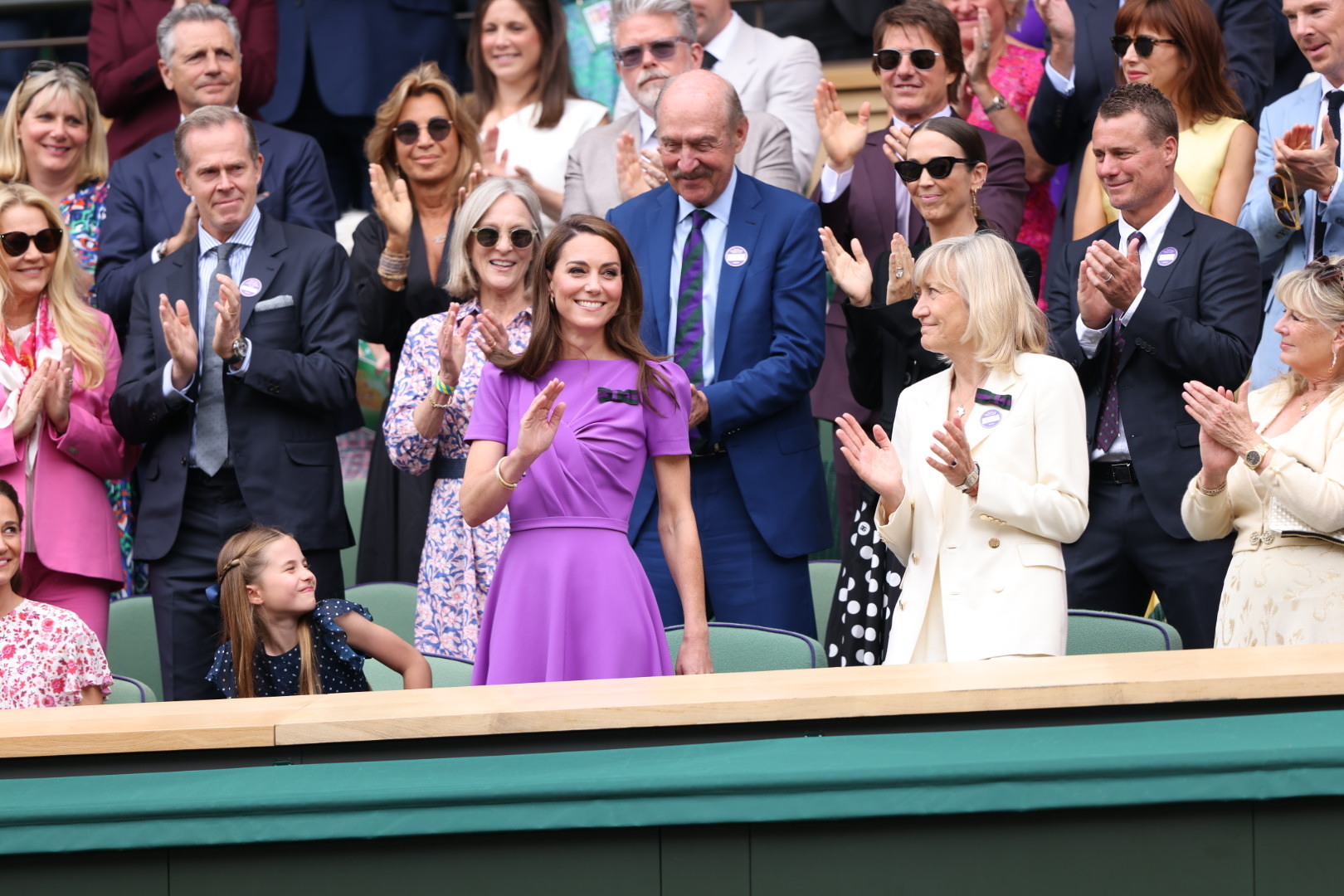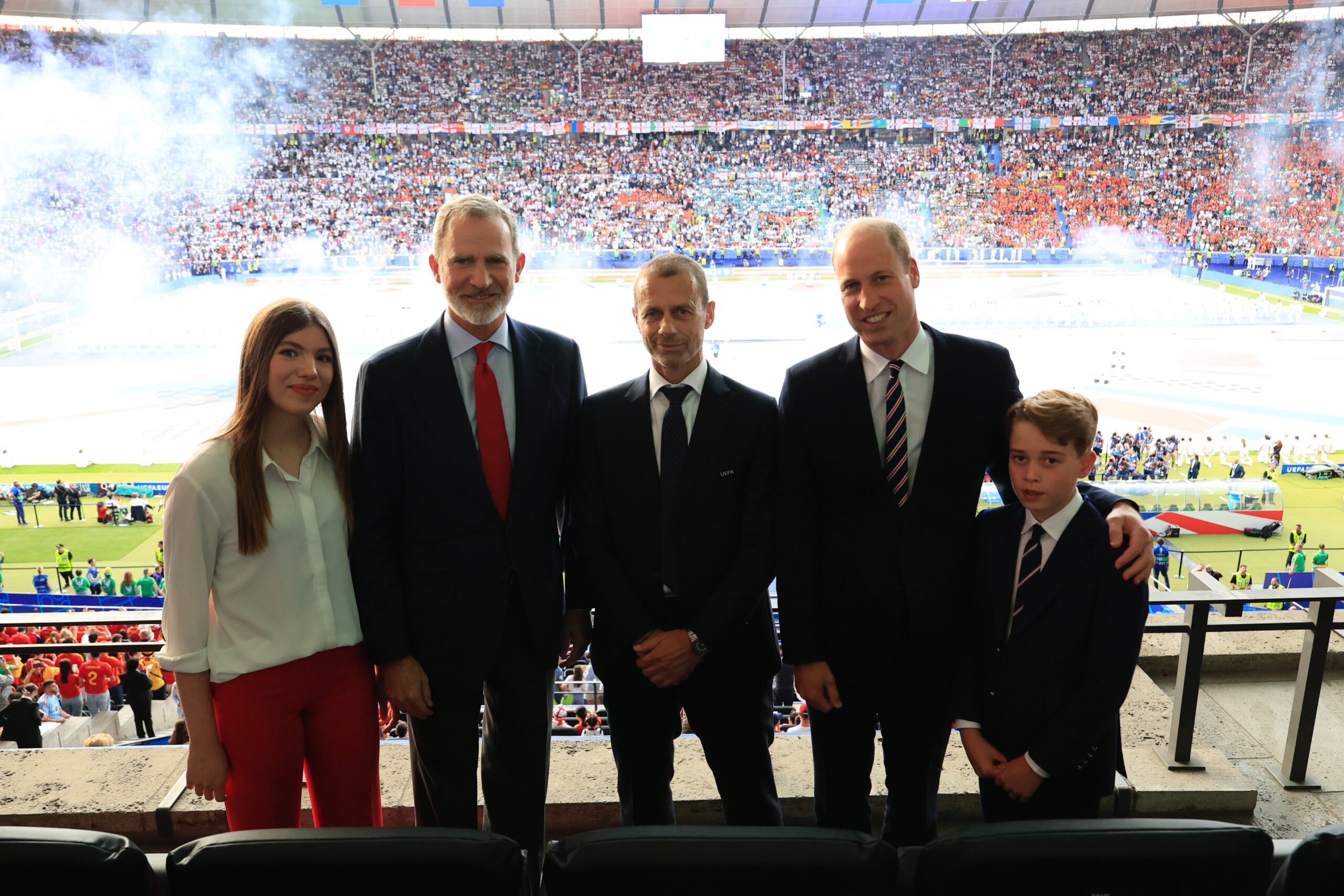Saturday 3rd June 2012 was an overcast, cold, drizzle-filled day. Another summer’s day in London, you may say, but this was no normal day…
This day happened the be the day of Queen Elizabeth II’s Diamond Jubilee celebrations, and the River Thames was the setting. Despite the weather, 670 boats (250 of which were man-powered) were taking part in a river pageant, with a million people lining the route to catch a glimpse of the spectacle, the Royal Family and the centre of the celebration – The Queen.
The vessels that took part were a mixture of military, commercial and pleasure. Vessels that were too tall to pass under London Bridge were moored with smaller craft, in what was called an “Avenue of Sail” in St Katherine’s dock. The Guinness Book of World Records named the pageant the largest ever parade of boats to take place. It surpassed the record of 327 which had been set the year previous in Bremerhaven, Germany.
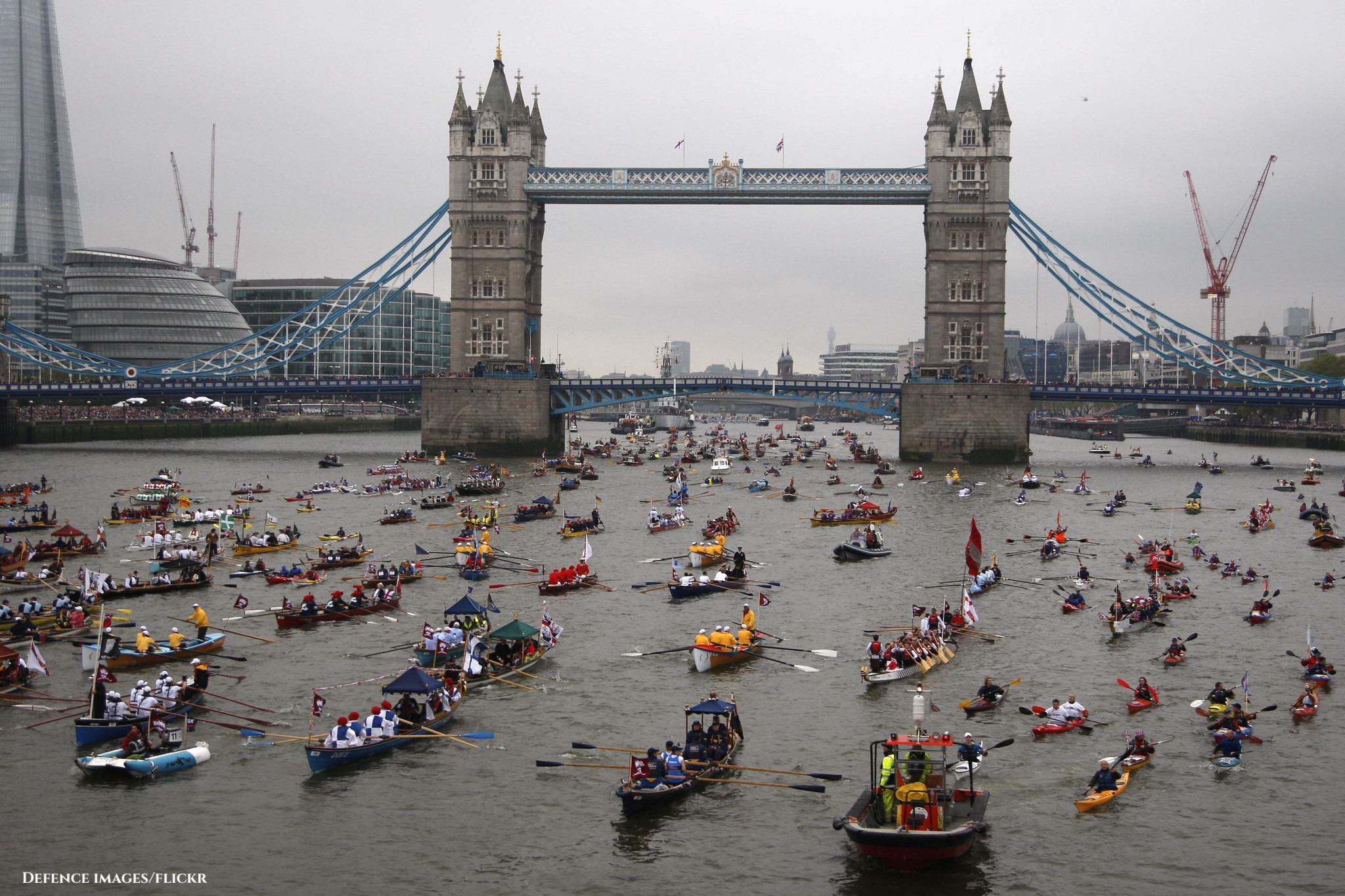
The Diamond Jubilee River Pageant featured a flotilla of over 1000 boats
With so many boats and with millions of people lining the route and watching coverage at home on television, the pageant had to be planned down to the second – but how did they do it?
The main organisers of the whole spectacle were the Thames Diamond Jubilee Foundation, which was chaired by Lord Salisbury alongside Michael Lockett and Adrian Evans, who was Pageant Master. The Foundation worked alongside various other organisations, which included the Port of London, the Metropolitan Police and the RNLI.
When looking into inspiration for the pageant, the Foundation settled on one: ‘Lord Mayor’s Day on the Thames’, an 18th century painting by Canaletto. The painting depicts a flotilla of boats with London as its background.
The pageant would travel from Wandsworth, almost the western tip of London, to Tower Bridge in the city, travelling under 14 bridges during that route. The timing of how long it would take a boat to go from bridge to bridge had been planned out, starting with Battersea Bridge at 2:25pm and ending at Tower Bridge at 4pm. The timing had to be just right.
The flotilla of boats were separated into 18 different sections, preceded by Music Herald Barges. Those 18 sections included The Royal Squadron (which included Spirt of Chartwell ferrying The Queen and the Royal Family), Dunkirk Little Ships, historic boats, passenger boats and man-powered boats among others.
The main moment of the day came when, at 2:15pm, the Royal Launch took place. The Queen and Duke of Edinburgh were taken by Britannia to the Royal Barge, The Spirit of Chartwell, at Cadogan Pier. On board already was The Prince of Wales, Duchess of Cornwall, Duke and Duchess of Cambridge, and Prince Harry.
The Spirit of Chartwell was the main barge of the flotilla, the one that everyone was focused on. It was 210 feet tall and had a top speed of 11 knots. It was donated to the Royal Family in 2011 for their use in the pageant. For over a year, it underwent a number of enhancements. Added to the barge were cyphers and symbols that referred to the coronation, the Commonwealth and the Gold State Coach. A crown was also added to the bow.
In the days before the pageant, the barge underwent further decoration, when it was hung with drapery featuring the arms of Commonwealth countries and of The Queen as well as being decorated with thousands of flowers and plants.
The Queen and senior members of the Royal Family spent the duration of the pageant on the upper deck of the Chartwell, so that they could be seen by all who had lined the route. They were covered from the drizzle by a gilt canopy, but that did not stop them from feeling the cold, with Her Majesty using a pashmina for most of the event.
At the front of the deck were two thrones, but not once were they used by The Queen or the Duke.

Members of the Royal Family – The Prince of Wales, Duke of Edinburgh, The Queen, The Duchess of Cornwall, Duchess of Cambridge, Duke of Cambridge and Prince Harry – aboard the Spirit of Chartwell during the Diamond Jubilee Pageant on the River Thames
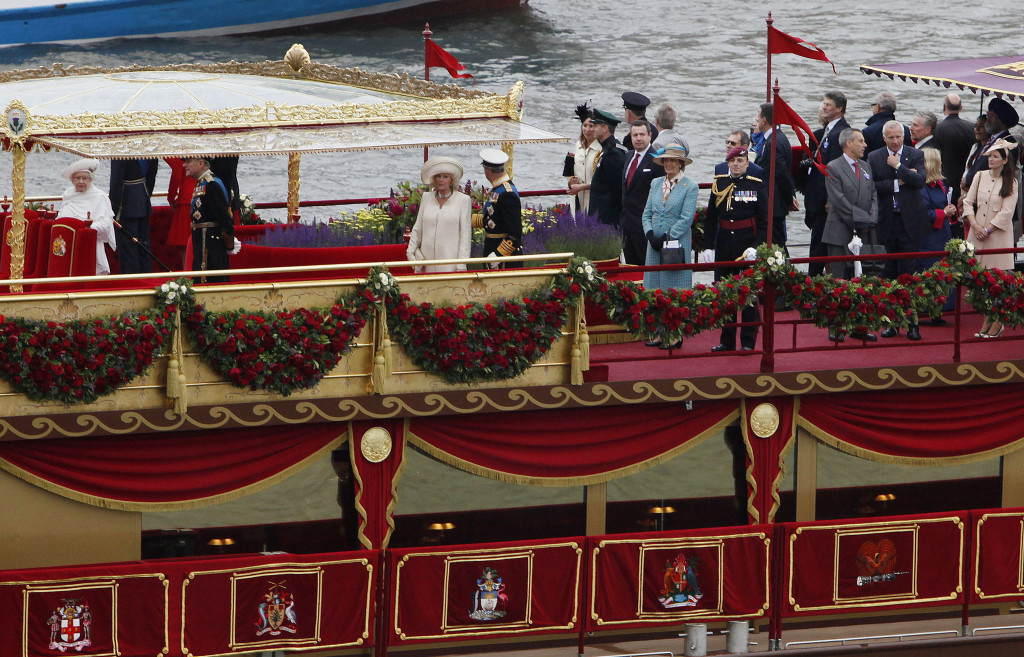
The Royal Family aboard Royal Barge Spirit of Chartwell during the river pageant
Leading the pageant was a floating Belfry, which had been fitted by eight newly cast bells from the Whitechapel Bell Foundry. Each bell was named after the eight senior members of the Royal Family and were known as the ‘Royal Jubilee Bells’. They rang for the whole of the pageant and churches along the route joined in, alongside churches across the UK.
Following the bells, came the man-powered boats which featured Gloriana, a privately-commissioned vessel for the Jubilee. The Gloriana stood out as it included Olympic medalists Steve Redgrave, Matthew Pinsent and Guin and Miriam Batten in its 18-member crew, with the Olympics to follow the Jubilee celebrations that summer.
Following the pageant, it was gifted to The Queen.
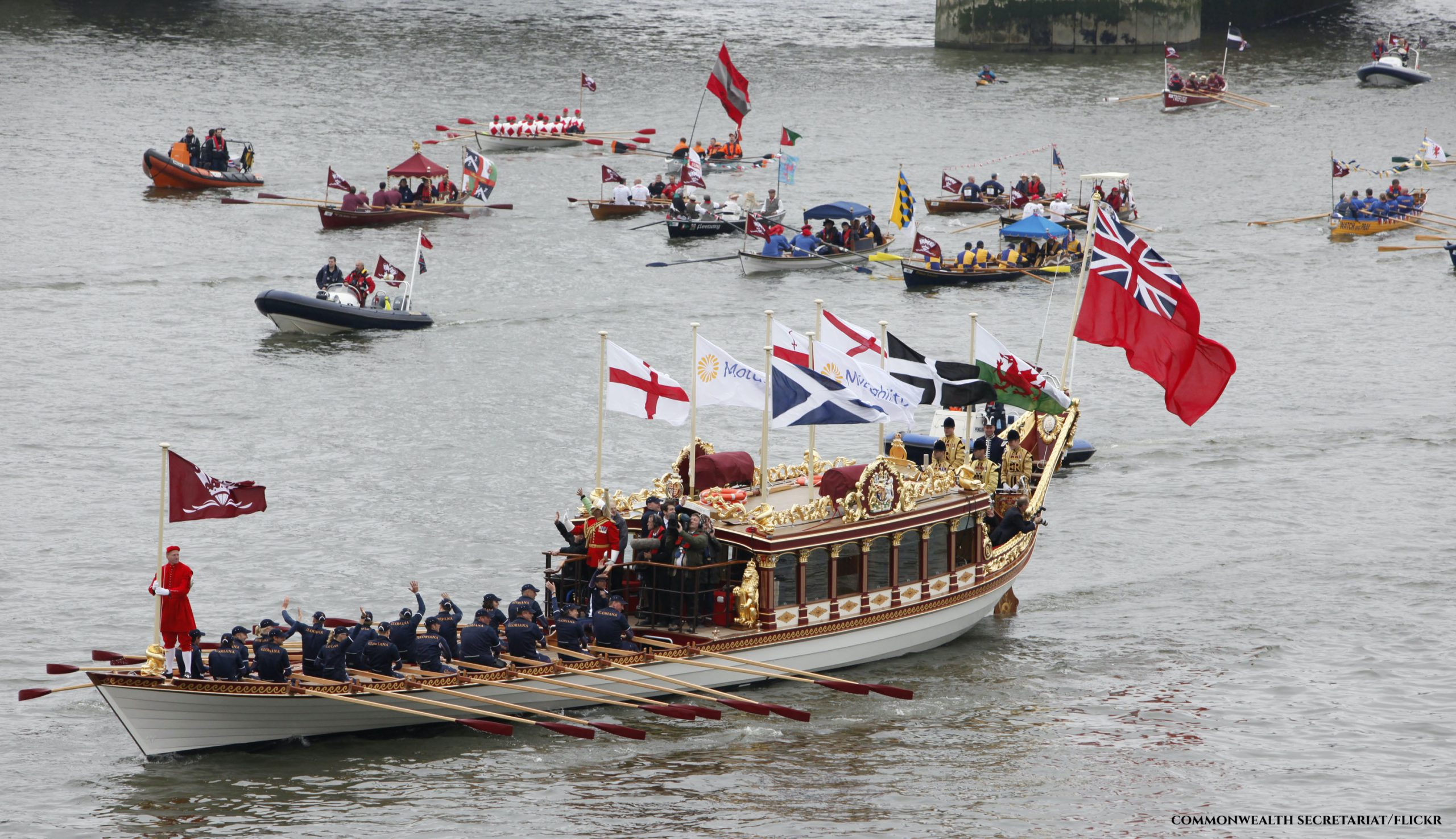
The royal row barge the Gloriana was manned by British olympians within the Diamond Jubilee 1000 boat Flotilla to commemorate The Queen’s 60th Year as British Monarch (Richard Lewis/Commonwealth Secretariat)
The Spirit of Chartwell was not the only boat used to convey members of the Royal Family during the procession. Preceding it was Trinity House No 1 Boat, which carried The Princess Royal. The Yorks and Wessexes were on board the Havengore, the same boat which conveyed Winston Churchill’s body along the Thames following his death in 1965.
Everywhere along the route, tributes were being paid to The Queen. One tribute which left her visibly delighted was from the National Theatre. As Chartwell passed, the life-size puppet horse from their production of War Horse appeared on the roof, a tribute to her love of horses.
As the barge nearer Tower Bridge, a gun salute was sounded and the bascules were raised to the full 80 degrees in salute. The barge docked at HMS President, where the Royals were to disembark to view the rest of the pageant, but they stayed on board instead. The younger Royals escaped inside to warm themselves up and get a drink but were quickly called back up by The Queen to watch the pageant.
The party spent four hours standing and waving to the vessels that passed by them. The pageant finished with music from the London Philharmonic Orchestra and the Royal College of Music Chamber Choir. The grand finale included the lowering of the bascules of the bridge as fireworks exploded in the background.
Unfortunately, due to the weather, the flypast which was planned had to be cancelled.
The day was one filled with joy and happiness, even the weather couldn’t dampen the spirits. The only shadow casted came the following day when The Duke of Edinburgh was admitted to hospital with a bladder infection. Most people thought that Philip standing in the cold and rain for four hours had caused his illness.
Where were you when the pageant took place? Did you celebrate?


